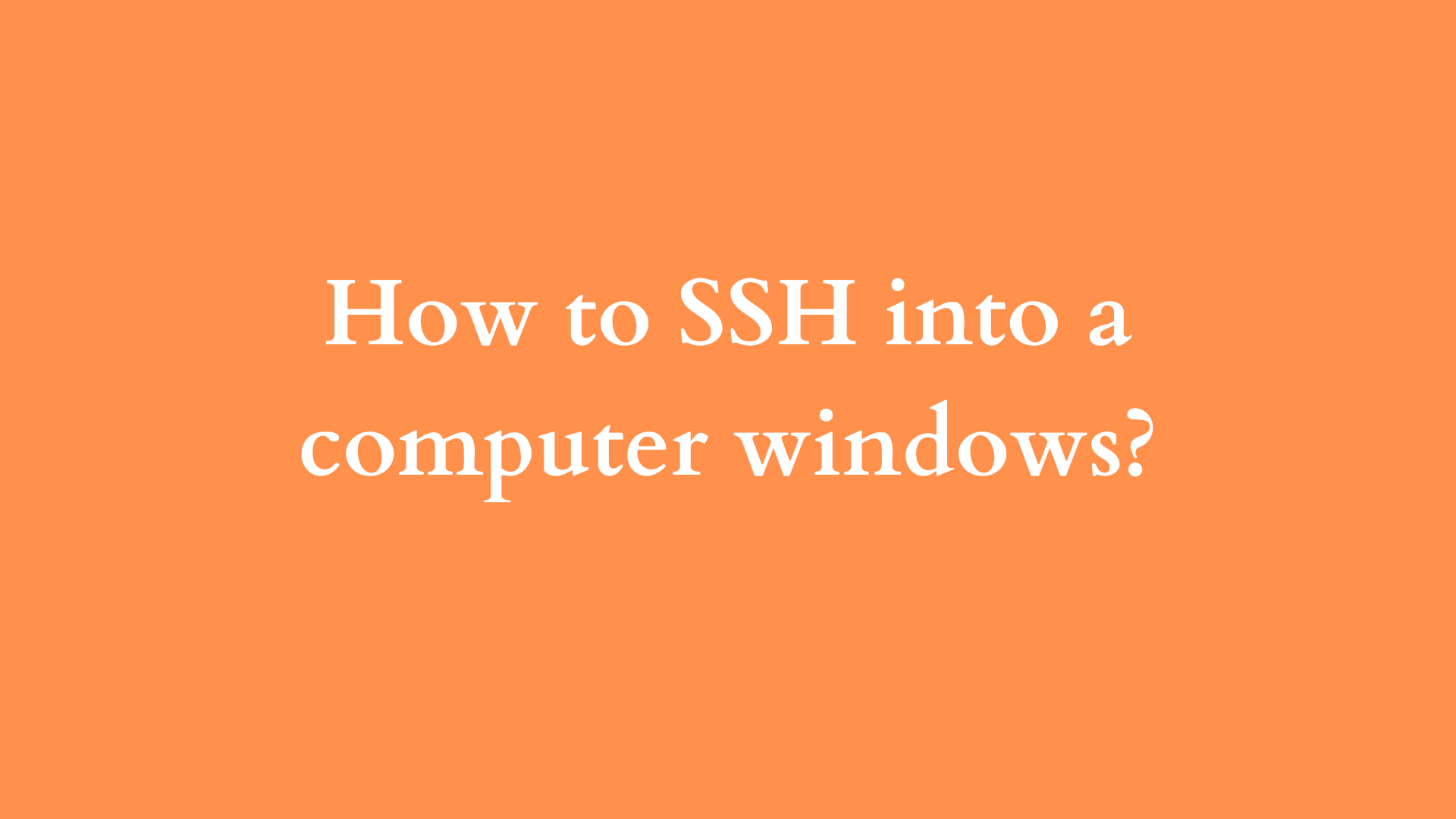Securing IoT Devices With Peer-to-Peer SSH Connections
In today's hyper-connected world, establishing secure remote connections for IoT devices using peer-to-peer (P2P) SSH protocols is more critical than ever. As the Internet of Things (IoT) continues to expand, the number of connected devices grows exponentially, increasing the demand for robust security measures. Understanding how to implement secure SSH connections is essential for safeguarding sensitive data and maintaining the integrity of your IoT ecosystem.
As industries increasingly adopt IoT applications, ensuring the security of remote connections has become a top priority for both businesses and individuals. This article explores the significance of using SSH for secure IoT connections, offering guidance on downloading and implementing free solutions to protect your devices and data. Whether you're a beginner or an experienced developer, this guide will equip you with the knowledge and tools necessary to fortify your IoT infrastructure.
By the end of this article, you'll gain a deeper understanding of the best practices for establishing secure remote IoT P2P SSH connections. You'll also receive step-by-step instructions, expert advice, and valuable resources to help you implement these solutions effectively. Let's get started!
Table of Contents
- The Importance of Secure Remote IoT P2P SSH Connections
- Understanding SSH and IoT Security Fundamentals
- Top Tools for Secure Remote IoT P2P SSH Connections
- How to Download Free Secure IoT SSH Tools
- Step-by-Step Implementation Guide
- Best Practices for Securing IoT Devices
- Common Risks and Threats in IoT Security
- Benefits of Using SSH for IoT Connections
- Comparing Free and Paid SSH Solutions
- The Future of Secure IoT Connections
The Importance of Secure Remote IoT P2P SSH Connections
With the rapid expansion of the Internet of Things (IoT), the significance of secure remote IoT P2P SSH connections cannot be overstated. IoT devices are increasingly being deployed in critical sectors, such as healthcare, transportation, and industrial automation, making them prime targets for cybercriminals. By implementing secure SSH connections, you ensure that data transmitted between devices remains encrypted and protected from unauthorized access, safeguarding both your devices and sensitive information.
Why SSH is Vital for IoT Security
SSH (Secure Shell) plays a pivotal role in securing IoT devices by providing a secure communication channel over untrusted networks. This cryptographic protocol ensures encrypted data transfer, authenticates devices and users, and protects against various cyber threats, such as man-in-the-middle attacks. Key advantages of using SSH for IoT security include:
- End-to-end encryption for data in transit
- Robust authentication mechanisms for devices and users
- Protection against unauthorized access and data tampering
- Enhanced data integrity and confidentiality
According to a report by Gartner, the global IoT device count is projected to surpass 25 billion by 2030, underscoring the growing need for advanced security measures to protect these devices and the data they handle.
- Exploring The 1974 Chinese Zodiac Unleashing The Power Of The Tiger
- Exploring The Magic Of Harry Potter And The Chamber Of Secrets
Understanding SSH and IoT Security Fundamentals
To effectively implement secure remote IoT P2P SSH connections, it's essential to grasp the fundamentals of SSH and its role in IoT security. SSH is a cryptographic network protocol that facilitates secure communication between devices, leveraging public-key cryptography for authentication and data encryption. This ensures that only authorized parties can access the information being transmitted.
Key Components of SSH
- Public and private keys: These are used for secure authentication, ensuring that only trusted devices and users can access the network.
- Encryption algorithms: These protect data privacy by encrypting information during transmission.
- Port forwarding: This feature allows secure access to remote devices, enabling efficient management and monitoring of IoT ecosystems.
When applied to IoT devices, SSH provides a secure and reliable method for managing and monitoring remote devices, ensuring that sensitive data remains protected from potential threats.
Top Tools for Secure Remote IoT P2P SSH Connections
Several powerful tools are available for implementing secure remote IoT P2P SSH connections. These tools range from open-source solutions to commercial products, each offering unique features and benefits. Below are some of the most popular options:
OpenSSH
OpenSSH is a widely adopted open-source SSH implementation that supports secure connections between IoT devices. Its key features include:
- Support for multiple encryption algorithms, ensuring robust data protection.
- Public-key authentication, enhancing security by eliminating the need for passwords.
- Secure file transfer capabilities, enabling safe data exchange between devices.
Putty
Putty is a versatile SSH client for Windows users, offering an intuitive interface for managing remote IoT connections. Its notable features include:
- Support for the SSH-2 protocol, ensuring compatibility with modern IoT devices.
- Customizable session settings, allowing users to tailor their experience.
- A command-line interface, providing flexibility for advanced users.
How to Download Free Secure IoT SSH Tools
Obtaining free secure IoT SSH tools is a simple and straightforward process. Numerous reputable sources offer open-source and freeware solutions that can be easily installed and configured. Below are some trusted platforms where you can download these tools:
OpenSSH
OpenSSH can be downloaded from the official website: https://www.openssh.com/. The site provides comprehensive installation instructions for various operating systems, ensuring a seamless setup experience.
Putty
Putty is available for download from the official website: https://www.chiark.greenend.org.uk/~sgtatham/putty/latest.html. The site offers both the executable file and source code, enabling users to customize the tool to meet their specific needs.
Step-by-Step Implementation Guide
Implementing secure remote IoT P2P SSH connections involves several key steps, from setting up the SSH server to configuring the client. Follow this step-by-step guide to get started:
Step 1: Install SSH Server
Begin by installing an SSH server on your IoT device. For Linux-based systems, use the following command:
sudo apt-get install openssh-server
Step 2: Configure SSH Settings
After installing the server, configure the SSH settings by editing the configuration file:
sudo nano /etc/ssh/sshd_config
Ensure that public-key authentication is enabled and password authentication is disabled to enhance security.
Step 3: Generate Public and Private Keys
Create public and private keys using the following command:
ssh-keygen -t rsa -b 4096
Transfer the public key to the IoT device:
ssh-copy-id user@iot-device-ip
Step 4: Test the Connection
Finally, test the connection by logging in to the IoT device using SSH:
ssh user@iot-device-ip
Best Practices for Securing IoT Devices
While implementing secure remote IoT P2P SSH connections is crucial, it's only one aspect of securing IoT devices. Below are some best practices to enhance the overall security of your IoT ecosystem:
Regularly Update Firmware
Keep your IoT devices updated with the latest firmware to address known vulnerabilities and ensure optimal performance.
Use Strong Passwords
Implement strong password policies for all user accounts and consider enabling multi-factor authentication (MFA) for additional security.
Limit Network Access
Restrict access to IoT devices to trusted networks and users, and utilize firewalls to block unauthorized connections, reducing the risk of cyberattacks.
Common Risks and Threats in IoT Security
IoT devices are susceptible to various security risks and threats, including:
- Unauthorized access, where malicious actors gain control of devices without permission.
- Data breaches, where sensitive information is exposed or stolen.
- Malware infections, where malicious software compromises device functionality.
- Denial-of-service (DoS) attacks, where devices are overwhelmed with traffic, rendering them unusable.
By implementing secure remote IoT P2P SSH connections, you can significantly mitigate these risks and safeguard your devices from potential threats.
Benefits of Using SSH for IoT Connections
Using SSH for IoT connections offers numerous advantages, making it an indispensable tool for securing your IoT ecosystem. Key benefits include:
Enhanced Security
SSH provides robust end-to-end encryption, ensuring that data remains secure during transmission and protecting it from unauthorized access.
Easy Management
SSH enables efficient remote management of IoT devices, allowing administrators to monitor and control devices from anywhere in the world, streamlining operations.
Cost-Effective
Many SSH implementations are open-source, making them a cost-effective solution for securing IoT devices without compromising on quality or functionality.
Comparing Free and Paid SSH Solutions
When selecting an SSH solution for your IoT devices, it's important to weigh the differences between free and paid options. Below is a comparison of the two:
Free SSH Solutions
- Open-source and highly customizable, allowing users to modify the tool to suit their specific needs.
- May have limited support and features compared to paid alternatives, making them ideal for small-scale deployments.
- Cost-effective for budget-conscious users who require basic functionality.
Paid SSH Solutions
- Offer comprehensive support and advanced features, ensuring higher levels of security and scalability.
- Suitable for enterprise-level deployments where reliability and performance are critical.
- Provide access to dedicated customer support teams, enabling swift resolution of issues and concerns.
The Future of Secure IoT Connections
As technology continues to advance, the future of secure remote IoT P2P SSH connections looks promising. Innovations in encryption algorithms, quantum computing, and artificial intelligence will further enhance the security of IoT devices, ensuring they remain protected against emerging threats. Additionally, the increasing adoption of IoT standards and regulations will establish minimum security requirements, safeguarding users and organizations from potential risks.
Kesimpulan
In conclusion, establishing secure remote IoT P2P SSH connections is a fundamental aspect of IoT security, offering a reliable solution for protecting sensitive data and ensuring device integrity. By understanding the fundamentals of SSH and adhering to best practices, you can effectively fortify your IoT ecosystem against potential threats.
We encourage you to explore and implement the tools and solutions discussed in this article, sharing your experiences and insights in the comments section below. For more information on IoT security and related topics, browse our other articles and resources. Together, we can create a safer and more secure IoT future!
- Experience The Ultimate In Luxury And Performance With The Mercedes Benz C300
- The Timeless Legacy Of Jordin Sparks And Her Soulful Anthem Love Will

Securely Connect RemoteIoT P2P SSH Download A Comprehensive Guide

Securely Connect RemoteIoT P2P SSH Download A Comprehensive Guide

Securely Connect Remote IoT P2P SSH Download A Comprehensive Guide